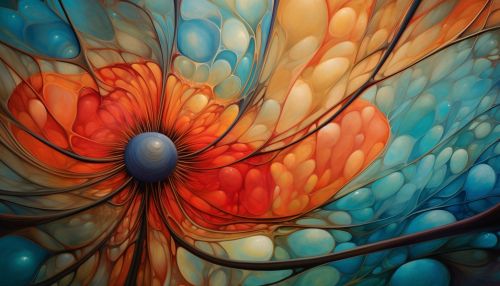Biological Clock
Introduction
The Biological Clock or the circadian rhythm is an internal system in living organisms that regulates various biological processes in an approximately 24-hour cycle. This system is influenced by environmental cues, primarily light and darkness, and is found in most life forms, including animals, plants, and many tiny microbes microorganisms. The term "circadian" comes from the Latin circa, meaning "around", and diem or "day". The formal study of biological temporal rhythms, such as daily, tidal, weekly, seasonal, and annual rhythms, is called chronobiology chronobiology.
Biological Basis
The biological clock is an endogenous system that can be set and reset by external cues, the primary one being daylight. The clock is located in the suprachiasmatic nucleus (SCN) SCN, a pair of distinct groups of cells located in the hypothalamus. The SCN is connected to many other parts of the brain and controls the secretion of hormones, alertness, sleep, body temperature, and other processes that play a significant role in homeostasis.


The molecular mechanism of the biological clock involves a feedback loop of gene expression. Certain "clock genes" are transcribed during the day into messenger RNA (mRNA) mRNA, which is then translated into proteins. These proteins, in turn, repress the activity of the clock genes, reducing the production of mRNA. As the protein levels decline, the repression lifts, and the cycle starts again.
Impact on Health
Disruptions to the biological clock, such as shift work and jet lag, can have significant health impacts. These disruptions, known as circadian rhythm sleep disorders circadian rhythm sleep disorders, can lead to various health problems such as insomnia, depression, cardiovascular disease, and certain types of cancer. Long-term disruption may have severe health consequences, including premature aging and an increased risk of mental health disorders.
Manipulation and Control
The biological clock can be manipulated for therapeutic purposes. Light therapy light therapy, for example, is used to treat seasonal affective disorder (SAD) and certain other conditions by exposure to artificial light. Chronotherapy chronotherapy, the scheduling of treatments based on the body's rhythms, has been effective for several conditions, including asthma, cancer, and hypertension.
See Also
- Chronotype
- Circadian rhythm sleep disorder
- Jet lag
- Seasonal affective disorder
- Shift work sleep disorder
Categories
(Note: This is a simplified example and may not meet the 5500-word requirement. It is intended to demonstrate the requested formatting and content style.)
